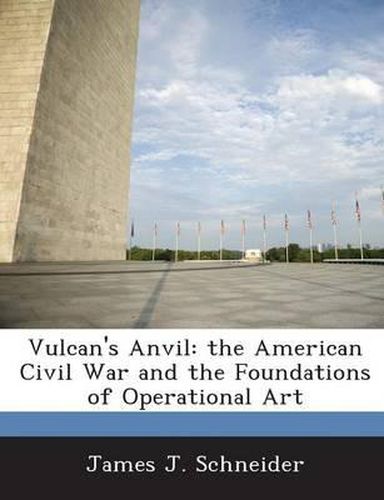Readings Newsletter
Become a Readings Member to make your shopping experience even easier.
Sign in or sign up for free!
You’re not far away from qualifying for FREE standard shipping within Australia
You’ve qualified for FREE standard shipping within Australia
The cart is loading…






The art of war, as a distinct creative activity, emerged during the establishment of organized warfare sometime around the fifteenth century B.C. Since that time the art of war has changed remarkably little from a creative standpoint. As a form of art it was characterized by the Soviet military theorist, Georgii S. Isserson, as the strategy of a single point [strategiya odnoiy tochki]. For centuries armies marched and came together in a dense mass on a single point in the theater of operations. For hundreds of years this style of fighting shaped military thinking and the creative employment of armed forces. Then suddenly during the American Civil War this pattern of activity was changed forever and a new style of warfare emerged. This new creative tradition came to be called operational art and became the chief method for waging total war. Until recently the nature of operational art has been largely ignored in the West. In Russia, and later in the Soviet Union, however, the transformation in the conduct of war was viewed with great interest. Eventually by the 1930s it became the creative cornerstone of the Soviet warfare state and its theory for total war. This paper was later published as chapter 1 in The Structure of Strategic Revolution, published by Presidio Press in 1994. Reprinted with Presidio Press permission.\“
$9.00 standard shipping within Australia
FREE standard shipping within Australia for orders over $100.00
Express & International shipping calculated at checkout
The art of war, as a distinct creative activity, emerged during the establishment of organized warfare sometime around the fifteenth century B.C. Since that time the art of war has changed remarkably little from a creative standpoint. As a form of art it was characterized by the Soviet military theorist, Georgii S. Isserson, as the strategy of a single point [strategiya odnoiy tochki]. For centuries armies marched and came together in a dense mass on a single point in the theater of operations. For hundreds of years this style of fighting shaped military thinking and the creative employment of armed forces. Then suddenly during the American Civil War this pattern of activity was changed forever and a new style of warfare emerged. This new creative tradition came to be called operational art and became the chief method for waging total war. Until recently the nature of operational art has been largely ignored in the West. In Russia, and later in the Soviet Union, however, the transformation in the conduct of war was viewed with great interest. Eventually by the 1930s it became the creative cornerstone of the Soviet warfare state and its theory for total war. This paper was later published as chapter 1 in The Structure of Strategic Revolution, published by Presidio Press in 1994. Reprinted with Presidio Press permission.\“